Everyone knows about the Prius – but how about the other Prius?
The one that saves you money on itself – as well as on gas?
It’s the Prius C.
But it won’t be around for much longer . . .
What It Is
The Prius C is not as well-known as the eponymous Prius – Toyota’s popular five-door hatchback hybrid – but it’s the same basic thing in a smaller and more affordable package.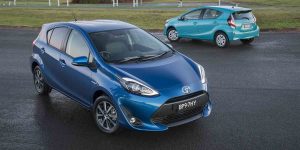
Prices begin at $21,540 for the L trim and top out at $22,955 for an LE with push-button ignition and a larger, upgraded touchscreen.
For reference, the Prius everyone knows about starts at $24,200 and runs to $32,375.
What’s New
Toyota has changed the Prius C’s trim structure. The previous One, Two, Three and Four trims have been replaced – and winnowed down – to base L and top-of-the-line LE.
The new top-of-the-line 2019 LE is also substantially discounted vs. last year’s top-of-the-line Four (which listed for $24,965).
What’s Good
Saves you money up front.
Reduces cost to drive almost as much as the other Prius.
Has more backseat legroom than its larger brother.
No Angry Samurai Face
What’s Not So Good
Larger Prius has more cargo area.
Limited options/amenities.
Isn’t in a hurry.
Is about to be replaced.
All trims come standard with a 1.5 liter gas engine paired with an electric motor and battery pack.
The combo makes 99 horsepower – less than the 121hp produced by the better-known Prius’ larger 1.8 liter engine and battery pack/motor.
Mileage is also a bit less: 48 city and 43 on the highway vs. 52 city, 48 highway for the C’s larger brother.
Aber, if saving money is your goal here, consider the $2,670 you won’t spend on the C itself – as opposed to the slight difference in miles-per-gallon.
That $2,670 you didn’t spend on the C buys about 1,100 gallons of gas at today’s roughly $2.40 per gallon. If you average 45 MPG, that’s equivalent to free fill-ups for about 50,000 miles of driving. You’d need to drive the other Prius many more miles before it amortizes your investment.
The main price you pay is in the form of quickness.
In both cases.
It takes the Prius C about 11 seconds to get to 60 vs. just under ten for the other Prius. Most non-hybrid economy cars are capable of getting to 60 in about eight seconds. But none of them are capable of averaging even 40 MPG – and only a few manage to crest that on the highway.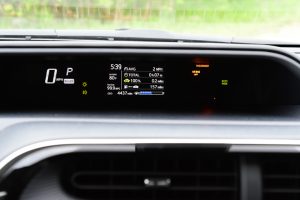
Either Prius will always average at least 40-something, no matter how hard or fast you drive it. I can vouch for this from personal experience with both the C and the other Prius. I’ve driven several of each for extended periods of time and even (Toyota, if you’re reading this, please stop now) at a steady 80 on I-18, the thing used less gas than any non-hybrid I’ve ever driven did in stop-and-go city traffic.
This may not be a huge big deal at the moment because the price of gasoline is currently low. But that could change. If it does, hybrids like the C will be hot commodities – and you’ll probably have trouble buying one for less than full sticker price.
Right now, you can buy either at a discount because gas is cheap – and people aren’t especially interested in gas mileage.
Both the C and its bigger brother are front-wheel-drive as they come, have continuously variable automatic transmissions and are capable of operating on battery power alone at low speeds, in stop-and-go traffic.
But the other Prius is available with AWD as well as a plug-in option that lets it operate for longer – and at higher speeds – on battery power alone.
The C has adequate speed. It just needs more time to get up to speed.
That’s the difference between the economy cars of the past – and today. You may need to get a running start to merge onto a highway, but the C can easily maintain 70-75 once you’re on the highway.
That wasn’t true of ’70s or even ’80s-era economy cars – which had top speeds around 70-75 MPH. That meant they had trouble maintaining 70 – and sometimes, couldn’t.
And there aren’t many cars that average close to 50 MPG at 70 MPH.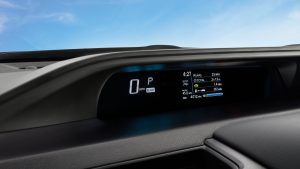
Except the other Prius.
Both of them will exceed 100 MPH if asked – not that I know anything about that… .
In stop-and-go city traffic, meanwhile, the C is almost electric car quiet – because in stop-and-go driving, it functions as an electric car – with its gas engine off (and so, silent) much of the time.
Which brings up an interesting thing.
Hybrids are falling out of favor – in favor of electric cars – which is odd, because hybrids solve the two biggest problems with electric cars.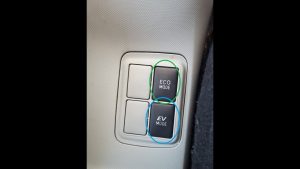
You never have to worry about range – because if the battery runs low on charge, the hybrid’s gas engine will kick in to keep you going. And you’ll never have to wait for the batteries to recharge – because the hybrid recharges itself as you drive.
Also, the hybrid’s batteries should last longer – probably, for the life of the car – because they’re used part-time rather than all the time.
One of the hidden costs of EV ownership is having to replace the battery pack before the car reaches the end of its useful service life – and that can cost several thousand dollars. It is rare to hear about a hybrid ever needing a new battery pack – but we’re already hearing about electric cars that do. You can pick up a used Nissan Leaf or Tesla (these have been on the road the longest and so are good examples of what happens as EVs age) for a fire-sale price because the thing has a tired battery and so much less range.
And maybe no range at all.
That’s another thing to consider. An EV with a worn-out battery pack that won’t accept or hold charge is useless. Because it won’t move. But even if a hybrid’s battery wears out, it still has a gas engine to power it and you’ll be able to keep on driving it.
You may not average 40 MPG with a dead battery – but it will probably still get better mileage than most non-hybrid economy cars.
The C is also an easier car to drive in city traffic than its bigger brother because of its smaller proportions. It’s about 18 inches shorter overall (162.4 inches vs. 180 inches) which is a nice extra margin for slotting into tight parking spots with traffic buzzing all around you (less need to back in and back out; just slip in) and to make use of gaps in traffic while you’re moving.
Though it hasn’t got much power, the fact is most drivers of more powerful cars don’t make much use of their power. If you’re on the bounce and ready for opportunities you can make better use of them than people behind the wheel of 300 horsepower sport sedans who are asleep at the wheel.
Being much smaller, the C can fit in spots that the larger Prius has to pass by. But being smaller, it also has less “trunk” than the regular Prius. However, both of them are hatchbacks – and that layout gives each proportionately much more room for cargo than cars larger than them both.
The larger Prius has 27.4 cubic feet of total cargo capacity – comparable to a small crossover SUV’s capacity. But the C still has 17.1 cubic feet of capacity.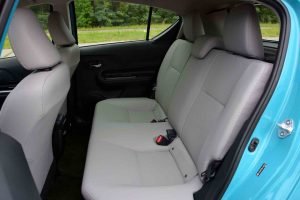
As a point of reference, a current S-Class Mercedes sedan – which is 206.9 inches long overall or nearly four feet longer, bumper to bumper – only has an 18.7 cubic foot trunk.
The hatchback layout also provides more access to that space.
Surprisingly, the C has noticeably more backseat legroom (35 inches) than its bigger but not as roomy-back-there brother, which only has 33.4 inches of legroom in its second row.
Headroom is generous in both rows because of the high roofline relative to the rest of the car.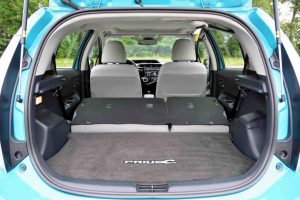
But perhaps the best thing about the C is that it hasn’t got Angry Samurai Face. The other Prius now does. The reason the C doesn’t is because the current model dates back to about 2012 and back then, the Angry Samurai Face thing hadn’t become a thing yet. It is now very much the thing – even for hybrids, which is silly given the whole point is about not-aggression. But people are feeling like cornered rats because of the descent of the country into banana republic authoritarianism on the one hand and because of an inchoate sense of powerlessness to do anything about it on the other hand.
The Angry Samurai Face makes people feel a little less so, apparently.
But it’s also enervating to own a car that frowns at you as well as the world.
The C doesn’t do that. It’s just a car.
Also a less busy car. The interior is simpler and it lacks the Teslian touchscreen interface that is now optional and likely soon-to-be unavoidable in the other Prius. It has a conventional floor-mounted gear selector rather than a dongle-toggle hanging off the dashboard.
The aviation-style round air vents are something that ought to be standard equipment in every car as they are superior at directing airflow exactly where you want it to go.
The C – both trims – does come standard with Lane Keep Assist and Automated Emergency Braking, but these are older versions and not as peremptory as the latest versions of these system as in the other Prius.
It has a pull-up emergency brake – not an electrically activated/pushbutton parking brake.
What you’re getting here is, basically, a 2012 model car with the plastic still on the seats and a brand-new car warranty, with zero miles on the clock. This is a wonderful thing if you aren’t interested in all the things which are becoming very hard to avoid in cars designed (or redesigned) since 2012.
That one does offer things you can’t get in the C, such as all-wheel-drive and plug-in capability. But both of those things undermine the economic case for the car by raising the price of the car such that gas savings becomes an irrelevance.
The bad news is that it appears there won’t be a C for very much longer. Its replacement will be a hybrid version of the new Corolla – which will deliver better gas mileage but will also probably cost more and – for certain – will have Angry Samurai Face.
The Bottom Line
The C saves gas – and money.
But you’d better hurry!
. . .
Got a question about cars, Libertarian politics – or anything else? Click on the “ask Eric” link and send ’em in!
If you like what you’ve found here please consider supporting EPautos.
We depend on you to keep the wheels turning!
Our donate button is here.
If you prefer not to use PayPal, our mailing address is:
EPautos
721 Hummingbird Lane SE
Copper Hill, VA 24079
PS: Get an EPautos magnet (pictured below) in return for a $20 or more one-time donation or a $10 or more monthly recurring donation. (Please be sure to tell us you want a sticker – and also, provide an address, so we know where to mail the thing!)
My latest eBook is also available for your favorite price – free! Click here. 


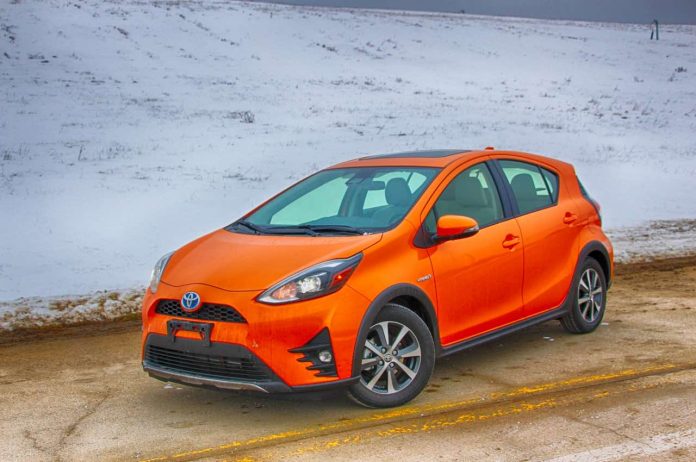

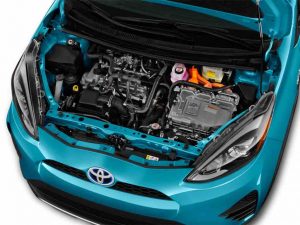


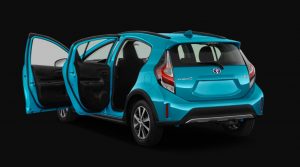
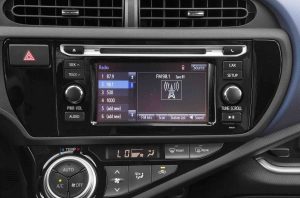
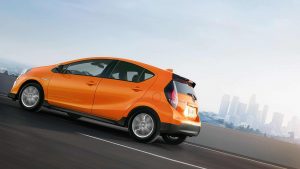








Prices begin at $21,540 for the L trim and top out at $22,955 for an LE with push-button ignition and a larger, upgraded touchscreen.
In my area they wouldn’t quote the L trim of course as that was I inquired about. They have LE with the unwanted doodads including a 2500 discount for cash from Toyopet at 22,390 and that is without the added charges.
These prices that you get from Toyopet are ubrealistic
Oh look, Prius now has that same ugly basketball shoe look that every other car on the road has.
My wife has an 07 Camry Hybrid and she loves the thing. I’m not so sanguine; I had to put a cat in it a bit over a year ago and it’s started throwing cat codes again this weekend. I’m also concerned about the battery. The car’s been driven more highway/distance than in town by probably 6- or 7-1, but it can’t last forever. A new battery costs more than the car is worth. A “renewed” battery only costs half as much as the car s worth. If the battery dies, the car is worth essentially nothing.
Oh, and it has the gooey dashboard problem. Yay.
Hybrids may solve the EV “problem”, but they have plenty of their own.
Hi Freeholder,
I’d hook up a code reader and try to ascertain why the thing is throwing codes; might be a bad O2 sensor or some other thing upstream of the cat. Diagnosing these Wurlitzers can be a hassle, I know. The Camry itself is a very good car.
And I agree with your overall points in re hybrids. Neither they nor (much less) EVs are necessary. And given the cost of gas, it’s hard to justify spending even $2k or so extra for a hybrid vs. the same thing in non-hybrid form.
But at least it doesn’t need 30-45 minutes to recharge and doesn’t cost tens of thousands more!
I’ve got a BlueDriver, and all it found was the pending code and the set code for the cat. I’ve talked to the place that put it in. Good folks, second generation ownership. Actually cares about customers. They said bring it in and let them investigate. They think it may actually be a bad cat. I should be so lucky.
FWIW, there was a Yahoo.com article about aluminum batteries that would cost a lot less than Li-Ion batteries. They’d weigh a lot less. Finally, they’d be a lot easier to recycle because we already have the infrastructure in place for recycling aluminum, whereas recycling Li-Ion batteries is a challenge. There was no mention of the energy density though.
I did a cursory search for aluminum batteries, Bing results kept pointing back to a 2015 paper released by Stanford University that had a few samples made in a lab. More of the “3 to 5 years away” tech that looks great in a lab, but isn’t commercially viable at scale, or doesn’t have any distinct advantage over existing technology. From the feel of the articles read it looks to me like the issue is probably producing the electrodes in masse. Some use carbon nanotubes, some are using titanium compounds.
RK,
All I can remember from the article is that Swedish & Slovenian universities were involved in the research. I remember that they mentioned something about the electrodes too.
I agree it’s silly to get rid of hybrids. If you want a realistic way to reduce gasoline useage without throwing us back to the Stone Age hybrids and plug in hybrids are the way to go. I bought a used Volt and I love it! And I could drive from here to Alaska today if I wanted to. I’d love to own one of those Via plug in hybrid trucks, if they ever come out and I can get one used for a decent price.
You think the cheaper version would be more popular…..
Maybe it’s because it doesn’t look like a Prius so no virtue signaling.